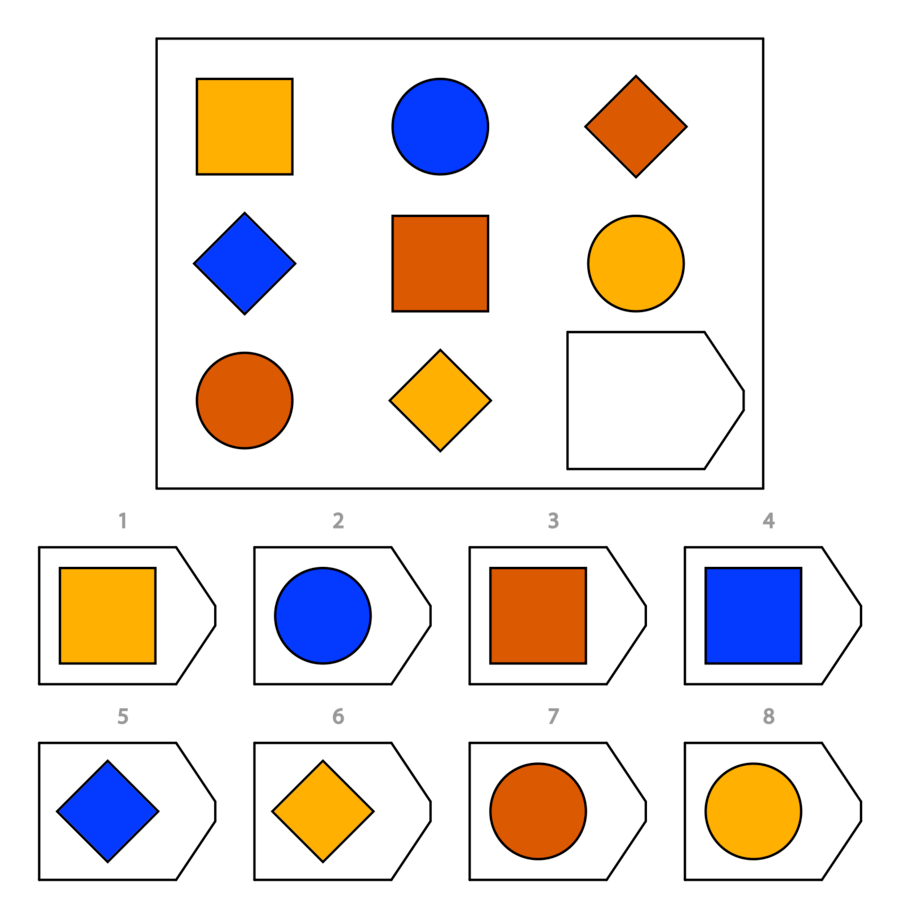Matrices IQ Test
IQ is one of the most solid concepts in social science and is widely agreed to be the most effective way of measuring intelligence. In contemporary society, IQ is widely used for educational admission, the assessment of intellectual ability, and the evaluation of job applicants. While there are a lot of subpar IQ tests online, this test uses culturally neutral matrices to determine your IQ.
What is your IQ? For each of the following items, indicate your answer below.
This test is in timed mode.
You will have 20 minutes to finish the test. Once you are ready, click Start Test.
The IDRlabs Matrices IQ Test was developed by independent intelligence researchers for IDRlabs.
Matrices are a fundamental concept in mathematics, and their application extends beyond traditional equations to fields like computer science, physics, and even intelligence testing. In the realm of IQ tests, matrices are frequently employed to assess an individual's logical reasoning, pattern recognition, and problem-solving skills. These tests, often referred to as matrix IQ tests, are designed to measure a person's cognitive abilities in a structured and timed manner.
Matrix IQ tests typically consist of a series of grids or matrices, each containing a pattern or sequence of shapes, numbers, or symbols. The challenge for the test-taker is to identify the underlying rule or relationship within the matrix and apply it to select the correct answer from a set of options. The complexity of the matrices can vary, ranging from straightforward patterns suitable for elementary tests to intricate arrangements that challenge even the most advanced problem solvers.
One of the key aspects of matrices IQ tests is that they assess not only an individual's knowledge but also their ability to recognize and extrapolate patterns. This makes them particularly effective in evaluating fluid intelligence, which involves solving novel problems, adapting to new situations, and grasping complex relationships without relying on prior knowledge.
Matrices IQ tests often include different types of patterns, such as numerical progressions, geometric arrangements, or symbolic sequences. For example, a matrix might contain a series of numbers where each cell follows a specific arithmetic or geometric progression. Alternatively, the test-taker might encounter matrices with shapes arranged in a particular order, with the challenge being to discern the underlying rule governing their placement.
The application of matrices in IQ tests aligns with the broader concept of abstract reasoning, requiring individuals to think beyond the concrete and apply logical principles to novel scenarios. Success in these tests reflects a person's capacity for analytical thinking, problem-solving, and the ability to identify and understand patterns, all of which are crucial components of intelligence.
Furthermore, matrices IQ tests are designed to be culturally neutral, aiming to assess cognitive abilities without favoring individuals with specific cultural backgrounds or educational experiences. This makes them valuable tools in cross-cultural assessments, allowing for a more equitable evaluation of intelligence across diverse populations.
Matrices IQ tests serve as a valuable instrument in evaluating cognitive abilities by assessing an individual's logical reasoning, pattern recognition, and problem-solving skills. The use of matrices in these tests provides a platform to measure abstract reasoning, requiring test-takers to decipher patterns and relationships within structured grids. This approach not only makes the tests versatile but also culturally neutral, contributing to their effectiveness in evaluating intelligence across diverse populations. As our understanding of intelligence evolves, matrices IQ tests continue to be a relevant and insightful tool in the assessment of cognitive abilities.
As the publishers of this free test, which allows you to screen yourself for the characteristics of IQ, we have strived to make the test as reliable and valid as possible by subjecting this test to statistical controls and validation. However, free online quizzes such as the present test do not provide professional assessments or recommendations of any kind; the test is provided entirely “as-is.” For more information about any of our online tests and quizzes, please consult our Terms of Service.





























































 English
English  Español
Español  Português
Português  Deutsch
Deutsch  Français
Français  Italiano
Italiano  Polski
Polski  Українська
Українська  Русский
Русский  Türkçe
Türkçe  العربية
العربية  日本語
日本語  한국어
한국어  ไทย
ไทย  汉语
汉语 